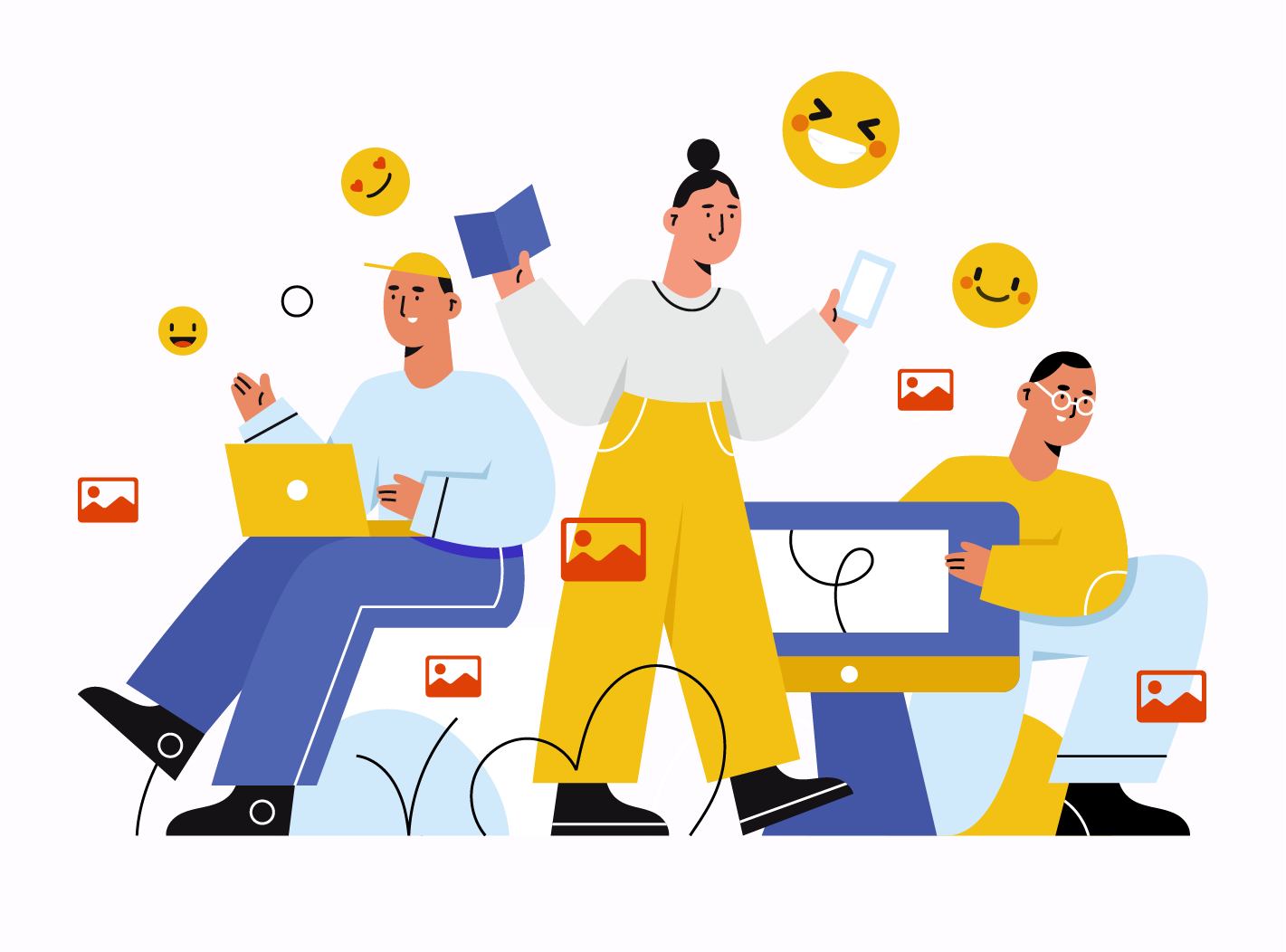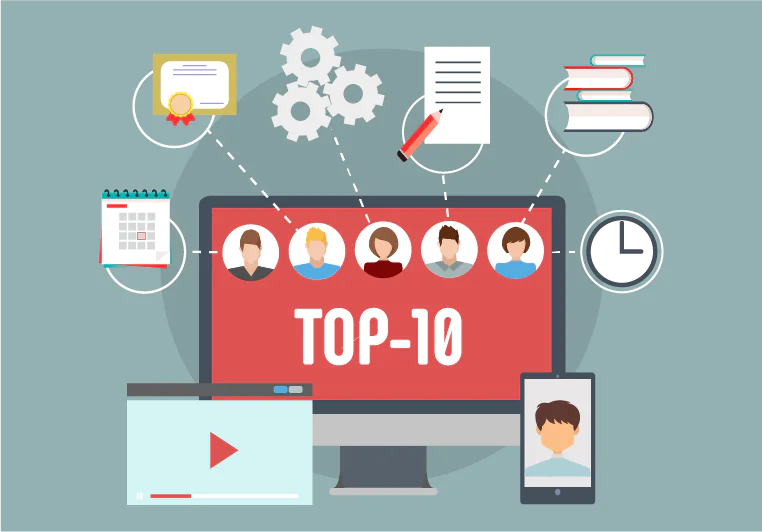Traditionally, motivation was considered as a matter of design in eLearning. This means that it was expected that the provision of appropriate learning activities and adequate instruction design was enough to engage the learning audience.
However, the key stakeholders of eLearning; educators and institutions, have come to terms with an important realization. They are beginning to reshape their understanding of motivation. It’s not necessary that good-quality instruction is followed by the desired motivation.
What is Reinforcement?
Reinforcement is an approach that focuses on empowering a certain behavior so it has a higher likelihood of being repeated. Usually, it is done through a specific stimulus, such as appreciation, praise, recognition, or a reward.
The correct application of reinforcement is effective enough to motivate and engage users, making them feel more empowered when it comes to learning, and having them utilize their educational prowess to the fullest.
Even stats make the case of positive reinforcement stronger. According to Herman Ebbinghaus’ forgetting curve, human brains are created to forget things due to lack of practice and repeated exposure. Thus, without reinforcement, learners could forget 90% of what they learn. Fortunately, there are a number of reinforcement strategies that assist people in “remembering”.
1. ARCS Model
The ARCS Model was created in 1983 by John Keller. Keller’s interest lied in the area of motivational design because he believed that it could systematically create replicable results gradually, leading to an improvement in the learner’s motivation to learn. Here are the four key elements of the ARCS Model.
1. Attention
Attention can be either captured through inquiry arousal or perceptual arousal. You can create perceptual arousal in your users by utilizing out-of-the-box, engaging, or novel events in the beginning of your lesson. As for inquiry arousal, you can stimulate questioning and curiosity by presenting challenging puzzles and problems to your users, attracting them via cognitive or intellectual engagement. Here are some methods that can help you with generating sufficient attention.
-
Active participation – Build simulations, roleplay, games, and hands-on strategies to promote active participation among your learners.
-
Inquiry – Show problems and ask questions that compel your learners to carry fruitful discussions.
-
Specific Examples – Publish stories and biographies and upload images in your content to showcase interesting examples.
-
Humor – The addition of funny pop culture references can go a long way in maintaining interest
-
Variability – Curate content via a wide range of mediums, such as audio, video, infographics
2. Relevance
Determine methods to associate the training material to your learner’s background. Through this, you can enhance the effectiveness of your learning process. Relevance plays a pivotal role in linking the content with the real world. The placement of examples and the use of concrete language can help with building relevance. In order to establish relevance, think about the relationship between the content to your learner’s previous experiences, motives, and goals. Here’s what you need to do for establishing relevance.
-
Choice – Incorporate choice in your eLearning solution so learners can rely on multiple methods to disclose what they know. In this way, they can play to their strengths.
-
Experience – Make learners understand how their new content is going to embrace their past experience and existing skills.
-
Future Prospects – Offer a glimpse of how your content can add value to your learner’s future ambitions.
-
Alignment – Display how your content addresses your learner’s requirements
3. Confidence
You have to provide your learners with the feeling that they can pass the course. When a learner gets overwhelmed with the content and deems it too hard, they may not even make an attempt to learn and refrain from trying their best. This happens when they have already made up their mind that they are destined for failure. This proves that too complex or difficult content is detrimental to motivation. You havea to organize content in a manner that imbues belief in the learner; they feel confident to understand content and accomplish the relevant tasks and exercises. Here are some ways to build confidence.
-
Mention prerequisites – When learners can check objectives and prerequisites, they will feel empowered and can assess their success chances in a course. Objectives allow them to figure out what’s expected from them. Similarly, prerequisites enable them to self-check – if they have the existing skill-set or knowledge to complete a course successfully. This way, learners can consider taking concrete measures to fix their deficiencies.
-
Learner Control – Offer some level of control to the learners when it comes to managing their learning path and assessment. This is useful because it lets them gain an important insight – their success is derived from their own choices and efforts.
-
Nurture Learners – Organize content in such a way that course difficulty grows over time. As a result, your learner evolves and expands their skill-set more easily.
4. Satisfaction
Getting an education must be something that satisfies the learner – something that makes them feel rewarded for their efforts. Satisfaction develops over time as the learner gets educated, meeting their goals and objectives, and addresses their needs. Praise and achievement also create a sense of satisfaction.
-
Equity – Don’t compromise on your standards. Raise your rewarding standards and keep them high so learners are aware of their achievements.
-
Extrinsic rewards – Offer direct encouragementencourage and surprise learners with rewards.
2. Time Continuum Model of Motivation
The Time Continuum Model of Motivation prioritizes the impact of motivation at various phases of eLearning. As per its creator, Raymond Wlodkowski, there are four critical aspects:
-
Value – What’s the importance of learning?
-
Appeal – Is the learning stimulating enough?
-
Perseverance – How are the learners maintaining participating?
-
Is there any environmental factor diverting their focus?
Controlling these distractions can improve perseverance. As per Atkinson and Birch’s Dynamic Action Theory, there’s comes a point in time when an individual is required to complete multiple incomplete actions. Since all of them are aiming for priority, this forms a dilemma, hindering perseverance.
Continuing motivation refers to what users learned outside the learning experience. It can be linked to improving transfer and retention, describing students on how to do this.
According to the time continuum of motivation, before instruction, you need to focus on attitude and need. During instruction, prioritize stimulation, and effect. Lastly, after instruction, emphasize competence and reinforcement.
Clearly state your goals throughout the course to establish positive attitudes by specifying the criteria for evaluation and using clear examples. You can address adult learner requirements by eliminating or minimizing those environment components that cause failure. Chances are offered to the learners so they can practice a piece of knowledge or a newly acquired skill before it’s formally assessed. There should be always room for some degree of assistance.
To retain learner’s attention, keep providing them with a multitude of activities and various presentation methods, focused on stimulating the learner. Also, see to it that the learner actively participates throughout the learning process. Uphold positive attitudes – leverage cooperative goals and learning structures for maximizing cohesiveness in the learning group. This is beneficial for maintaining the learner’s effort. In a similar vein, boost learner prowess by making the learner track their progress for certain goals through positive feedback.
3. Cognitive Learning Theory
Before understanding cognitive theory, it’s important to comprehend how metacognitive strategies work. Meta cognition refers to the attentiveness of your brain’s judicial processes and judgments. It forms the core of the cognitive learning theory. Cognition itself is the psychological process of relying on thoughts, senses, and experience to acquire knowledge.
Cognitive learning theory is a technique that is centered on the learner brain’s activeness. These forms of reinforcement strategies allow the learner to be fully engaged and attentive. Due to cognitive learning, you are not required to repeat or memorize stuff to understand.
Perfecting the cognitive learning approach allows you to remember and understand things for a long time. The primary objective is to enthrall the learner with maximum retention, knowledge, and understanding of the instruction. The fFollowing are some of the elements of cognitive learning.
Memory
Cognitive learning doesn’t align with rote learning. Instead, it requires a comprehensive understanding of the learning disciplines than the traditional passive learning methods. In this way, learners could use past information to recall new things.
Comprehension
Provide a suitable reason forto the learner on why is he studying a certain lesson. Additionally, learners have to recognize the significance of learning. This element shows how the newly-acquired skills are going to provide value in the future.
Interpret
The learner should have the ability to interpret and understand the eLearning content in a smooth and effective way.
Application
Cognitive learning techniques require that the learner apply the interpreted information in current future situations. Having a grasp of its application can help the learner to address issues effectively and make them become critical thinkers.
Tips for Positive Reinforcement in eLearning
There isare a wide range of methods for incorporating positive reinforcement into your eLearning. The following tips can help you in this regard.
1. Personalize your feedback
Provide personalized appreciation to students who have a greater affinity for positive learning. Refrain from providing standard praise to your audience. Although there’s nothing wrong with giving everyone a virtual pat when they return positive results or earn good scores, a better approach is to compleiment each learner on an individual level and tailor the praise. Try to be as specific as possible and make it a point to let them know what they did right. This way, they get to identify the learning behaviors that led them to earn appreciation, encouraging them to improve.
2. Offer constructive feedback
Instead of pointing at every mistake committed by your learner, it would serve you well to adopt an approach that’s revolves around motivation, inspiration, and encouragementencourage. When a learner is continuously struggling with a specific simulation, give positive and constructive feedback, and determine what makes the repeat the same behavior on a regular basis. When learners see you giving them a benefit of the doubt, and actually assist them in addressing an issue, they are likely to make adjustments and repeat the desired behavior.
3. Reward positive behavior
It’s important to reinforce the behavior as soon as it happens. Don’t wait till the end of your eLearning course to give rewards for the desiredable behavior. Or else, your learner would never be able to identify how the behavior connects with reinforcement. What this means is that their brains are not grasping the link between the act and the reward. Hence, you cannot expect to have a positive effect. A better approach is to reward positive behavior as soon as possible.
4. Don’t give too many rewards
Excess of a good thing is bad, especially when it comes to rewards. Rather than offering rewards to a point that they begin to have false expectations, consider surprising your learners with rewards. For instance, don’t reward your learners when they finish a unit. Instead, give rewards if they succeed in registering a high score on a difficult exam or complete a challenging scenario. With this element of surprise, you will not only increase motivation among your learners, but also make it more powerful and meaningful to them.
Final Thoughts
eLearning service providers should always pay heed to their learners’ motivational aspect. Reinforcement strategies are ideal for this purpose. The key is planning and implementing it effectively. For that, you can get in touch with us.





